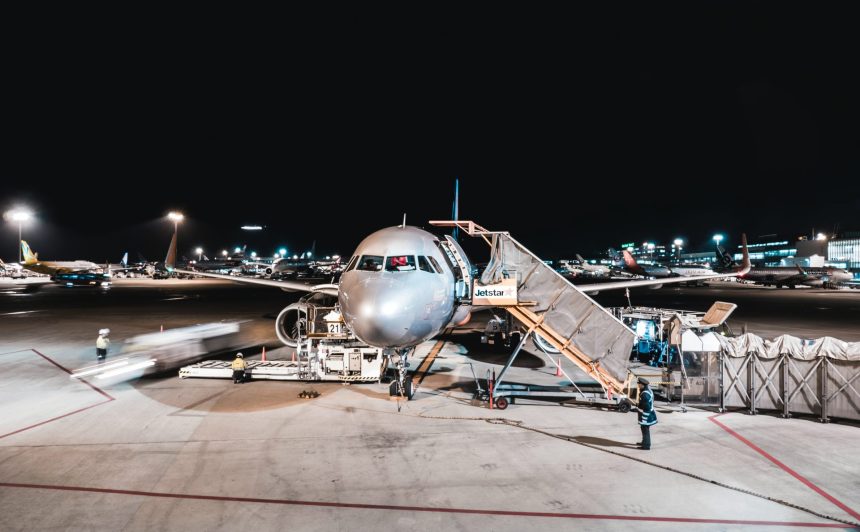When the TSA installs its self-service screening option at Las Vegas’s Harry Reid International Airport, it will radically alter the way passengers go through airport security. Passengers using the PreCheck program can now finish screening with little help from TSOs thanks to this cutting-edge technology. Minimizing person-to-person contact will improve security effectiveness, decrease wait times, and create a safer travel environment. Screening at Speed, a team within DHS’s Science and Technology Directorate, and the TSA’s Innovation Task Force collaborated to develop the self-service screening option.
Improvements to the Security Procedure
The new self-service screening option will allow travelers to use the passenger and carry-on screening systems at individual consoles or screening lanes themselves, according to Dr. John Fortune, the Screening at Speed program manager. Because of this, TSOs will be able to devote more time and energy to other crucial screening operations and conduct fewer pat-downs and bag inspections. During testing, both mock passengers and TSOs have expressed their strong approval of the technology.
Improving Safety and Productivity
Streamlining the screening process and making it more secure are the main goals of the self-service screening option. The technology’s goal is to reduce the need for TSOs to perform mundane screening procedures like bag inspections and pat-downs by giving passengers greater agency over their own screening experience. As a result, TSOs are free to concentrate on other crucial areas of airport security, guaranteeing a meticulous screening procedure. At first, only PreCheck members will have access to the self-service screening option, which will make their travel much easier and more convenient.
Working Together and Exploring New Ideas
Thanks to the joint work of the TSA Innovation Task Force and the Screening at Speed team at DHS’s Science and Technology Directorate, the self-service screening option at Harry Reid International Airport was developed. Micro-X, Vanderlande Industries, and Voxel Radar are three companies that were awarded contracts in 2021, and these devoted teams have been working closely with them. They have developed a system that is in line with the TSA’s aim to improve security and the travel experience for passengers thanks to their knowledge and innovative technology.
Educating and Executing
Harry Reid International Airport TSOs have already completed extensive training on how to operate the new technology, so the self-service screening option should roll out without a hitch. Being well-prepared enables them to offer passengers support and direction while they utilize the self-service options. Airport security of the future will be on display at the forthcoming Consumer Electronics Show (CES) in Las Vegas, giving both industry insiders and curious onlookers a chance to see the technology in action.
Setting the Standard for Airport Safety for the Future
Although other cities have tested this innovative technology before Las Vegas, the self-service screening prototype at Washington, D.C.’s Ronald Reagan Washington National Airport has shown promise. The self-service prototype has been installed in March and has been used to successfully screen volunteer passengers and their belongings. Trials have cleared the way for its installation at Harry Reid International Airport thanks to the good results and comments.
Why Self-Service Screening Is Beneficial
There are many advantages for travelers and TSOs alike with the installation of self-service screening at Harry Reid International Airport. Reduced reliance on TSOs for routine tasks improves efficiency and reduces wait times by giving travelers more control of the screening process. Furthermore, the technology reduces the amount of time people spend interacting with one another, making travel safer by reducing the likelihood of illnesses. Additionally, PreCheck members can enjoy a more streamlined experience with the self-service screening option, which enhances their travel journey overall.
Anticipating the Future
A major step forward in airport security innovation is the installation of self-service screening at Harry Reid International Airport. Airports and security agencies are always looking for new ways to improve passenger experience and security measures, thanks to the ever-advancing technology. For airports around the country, Las Vegas’s self-service screening option is a shining example of how to improve airport security. Working together, the TSA, DHS, and top companies in the industry are laying the groundwork for airport security that is safer, more efficient, and focused on passengers.
See first source: Fox Business
FAQ
Q1: What is the self-service screening option being introduced at Harry Reid International Airport?
A1: The self-service screening option is a new technology that allows passengers, particularly those enrolled in the PreCheck program, to complete screening procedures with minimal assistance from Transportation Security Officers (TSOs). It aims to streamline the security process and improve safety and efficiency.
Q2: What are the main goals of the self-service screening option?
A2: The primary goals are to improve security effectiveness, reduce wait times, and create a safer travel environment by minimizing person-to-person contact during screening. It also aims to free up TSOs to focus on other crucial security operations.
Q3: Who developed the self-service screening option, and how was it created?
A3: The self-service screening option was developed through collaboration between the TSA’s Innovation Task Force and the Screening at Speed team within DHS’s Science and Technology Directorate. Contracts were awarded to companies like Micro-X, Vanderlande Industries, and Voxel Radar in 2021, and they worked closely with these teams to develop the technology.
Q4: Who will have access to the self-service screening option initially?
A4: Initially, only members of the PreCheck program will have access to the self-service screening option, enhancing their travel experience.
Q5: How have TSOs at Harry Reid International Airport prepared for the introduction of this technology?
A5: TSOs at the airport have undergone extensive training to operate the new technology and assist passengers using self-service options effectively. They will provide support and guidance to passengers as needed.
Q6: What are the benefits of self-service screening for travelers and TSOs?
A6: Self-service screening benefits both travelers and TSOs by reducing the reliance on TSOs for routine tasks, improving efficiency, and decreasing wait times. It also reduces person-to-person interactions, enhancing travel safety. PreCheck members can enjoy a more streamlined experience with this option.
Q7: How does the self-service screening technology contribute to airport security and the passenger experience?
A7: Self-service screening technology is a significant step forward in airport security innovation. It improves the passenger experience by offering more control over the screening process, reduces wait times, and enhances overall security measures. It sets a standard for safer, more efficient airport security.
Q8: Has this technology been tested elsewhere, and what were the results?
A8: The self-service screening prototype was tested at Ronald Reagan Washington National Airport and showed promise. Successful trials led to its installation at Harry Reid International Airport.
Q9: How can travelers and industry professionals see the self-service screening technology in action?
A9: The technology will be on display at the forthcoming Consumer Electronics Show (CES) in Las Vegas, providing industry insiders and curious onlookers with an opportunity to see it in action.
Featured Image Credit: Photo by Ramon Kagie; Unsplash – Thank you!







